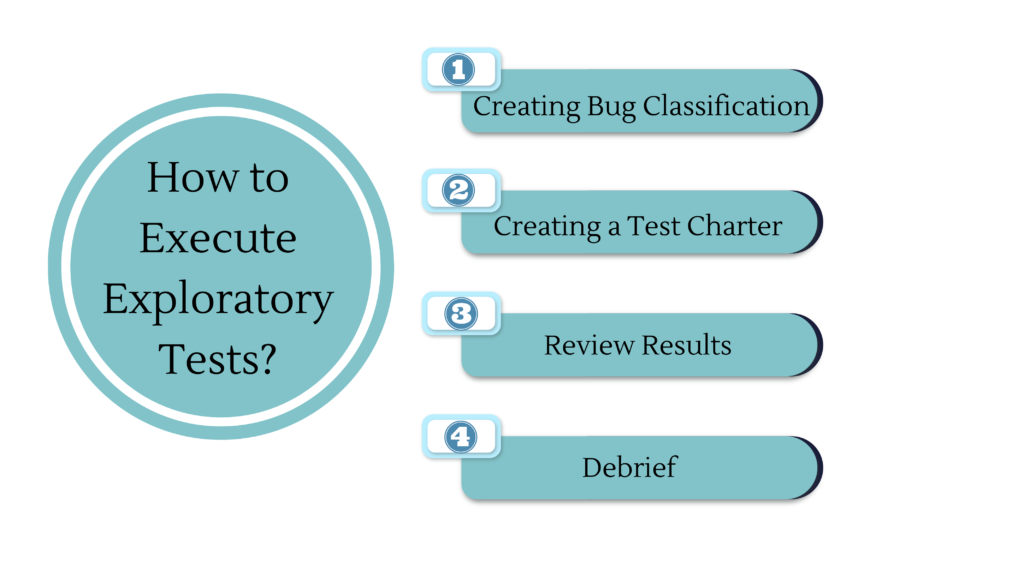
What is Exploratory Testing?
Software testing consists of numerous practices and approaches that help secure overall accurate results through all stages of the testing phase. Most of these approaches are implemented by following certain steps based on pre-planned test cases and assessing the actual results against what is expected.
These widely used scripted methods of testing have shown success in including as many scenarios as possible and fully scanning service channels from all angles of usability. But another method relied on heavily and remains valid today follows a more personalized means that would not necessarily abide by scripts. This testing method used to be known widely as Ad-hoc testing. But now it has come to be known most as “Exploratory Testing.”
In this article, we will look to define this creative software testing approach and highlight its present importance. We will also look at how exploratory testing works and when to use it.
What is Exploratory Testing?
Exploratory testing is an approach in which the testing process concatenates both test design and test execution to strengthen simultaneous learning and creative thinking.
The difference between scripted testing and exploratory testing is that while scripted testing relies on test designs and requires little to no thinking process, exploratory testing – hence its name – requires exploring and investigating.
One major distinction is that this testing is free of automation alternatives, unlike other methods that can substitute human labor with AI-powered systems and tools to implement specific steps that are decided and agreed upon based on design.
Why is Exploratory Testing Important?
Commonly used methods rely heavily on a documentation process that helps implement a structured manner of testing. These documents and specifications may not always be available, and testing experts would have to rely on logic-based investigations to track bugs firsthand through direct usage, therefore relying on an exploratory testing approach.
One other factor that makes this testing important is that it naturally detects more bugs because it involves personalized actions that emphasize a better understanding of the system being used. This testing approach is set out through a journey of realistic usage as expected by users and encourages intuition.
Another value to exploratory testing is highlighted by increasing creativity and generating innovative ideas as the work progresses.
Alongside other tactical methods, exploratory testing can be mixed with the overall testing project to guarantee excellent results, which serve in the end to increase productivity and quality altogether.
How to Execute Exploratory Tests?

Here is a detailed description of the steps in which exploratory testing can be executed:
A) Creating Bug Classification
This step involves three main actions. One is to identify the most common types of bugs based on previous projects, the second is to analyze the causes and the third is to define the risks and produce ideas.
B) Creating a Test Charter
Test charters include what to test and how to test it –
By doing so we have established the starting point of the testing journey based on how the end-user is expected to use the application.
C) Review Results
Evaluate your results and take notes for future tests.
D) Debrief
Here we compare what the output is with the test charter and assess whether further tests are needed.
Understanding Exploratory Testing:
Exploratory Testing is a dynamic and powerful approach to software testing that emphasizes discovery, learning, and adaptability. Unlike traditional testing methodologies that rely on predefined test cases, exploratory testing encourages testers to engage with the software in an unscripted and investigative manner. This approach is particularly effective in uncovering unexpected issues and gaining deeper insights into the application’s functionality and user experience.
Key Characteristics of Exploratory Testing
-
Simultaneous Learning and Testing: In exploratory testing, learning about the application and testing it happen concurrently. Testers continuously design and execute tests based on their understanding of the system, which evolves as they interact with the software.
-
Flexibility and Adaptability: This method allows testers to pivot and change their testing strategies based on what they discover during the process. It is not constrained by rigid test scripts, making it highly adaptable to new information and findings.
-
Focus on Creativity and Critical Thinking: Exploratory testing leverages the tester’s creativity, intuition, and critical thinking skills. Testers explore various scenarios, think like end-users, and investigate how the application behaves under different conditions.
-
Documentation on the Fly: Unlike traditional methods that require extensive pre-test documentation, exploratory testing involves real-time documentation of test cases and results. This can include session-based test management where testers record their observations and insights during testing sessions.
-
Rapid Feedback Loop: The approach provides immediate feedback, which is invaluable for agile development environments. It enables quick identification and resolution of issues, facilitating a faster and more efficient development cycle.
Benefits of Exploratory Testing
- Uncovers Hidden Defects: By not being restricted to predefined test cases, exploratory testing can reveal bugs and issues that might be missed by traditional testing methods.
- Enhances Tester Engagement: Testers often find exploratory testing more engaging and stimulating, which can lead to increased motivation and productivity.
- Improves Software Quality: The thorough, investigative nature of exploratory testing can lead to a higher overall quality of the software by addressing not just functional but also usability issues.
- Adaptable to Change: It’s particularly useful in dynamic environments where requirements frequently change, as it allows testers to quickly adjust their focus and testing strategy.
Implementing Exploratory Testing
To effectively implement exploratory testing, organizations should:
- Foster a Culture of Learning: Encourage continuous learning and curiosity among testers. Provide training and resources to enhance their exploratory testing skills.
- Use Session-Based Test Management (SBTM): Adopt SBTM practices to structure and document exploratory testing sessions effectively. This includes defining charters for each session and keeping detailed logs of testing activities and findings.
- Integrate with Agile Practices: Seamlessly integrate exploratory testing into agile workflows to maximize its benefits. Use it in conjunction with automated testing to cover different aspects of quality assurance.
- Encourage Collaboration: Promote collaboration between testers, developers, and other stakeholders to share insights and improve the overall testing strategy.
In Conclusion
Exploratory testing is a distinct approach that is used for multiple purposes that either seem logical and intrinsic or when we want to go that extra mile to ensure better results to serve our users. Therefore, we believe that it will always remain valid for a long time.
We at Q-Pros value exploratory testing skills and make sure to prepare ourselves with a team of skillful testers who can rely on diverse and creative testing methods to ensure quality and fulfill requirements.
Q-Pros is a leading IT company that provides testing services for clients on a global scale with experience in multiple domains and service types. Learn more about us and request your own unique testing service via our online form.
FAQs
Though exploratory testing comes with so many benefits, it is bound to have some negative points to it.
Here are some of the disadvantages and challenges of Exploratory testing:
- Exploratory methods strictly depend on skillful testers.
- Testers would have to be thoroughly knowledgeable about the application being tested.
- Reporting the outputs of executed tests can be a challenge when there is a documented basis to begin with.
- It is not suitable for long execution periods.
When the project demands early rehearsals or when a new tester has joined a project that is already in full action.
It can also come in handy when dealing with critical applications (An application that demands continuous usage, and in the unfortunate case of crashing or downtime would result in severe consequences).

